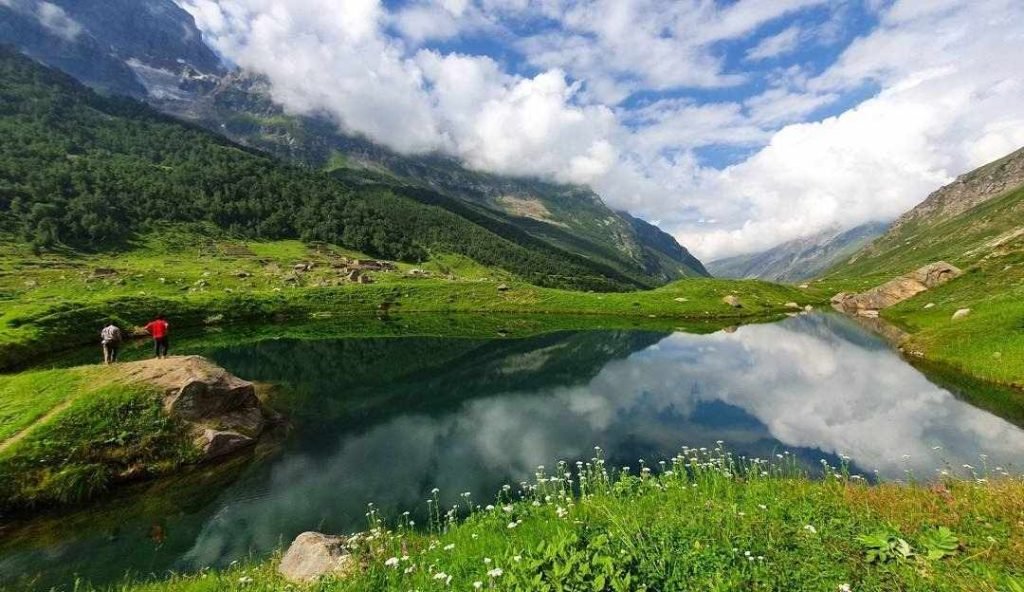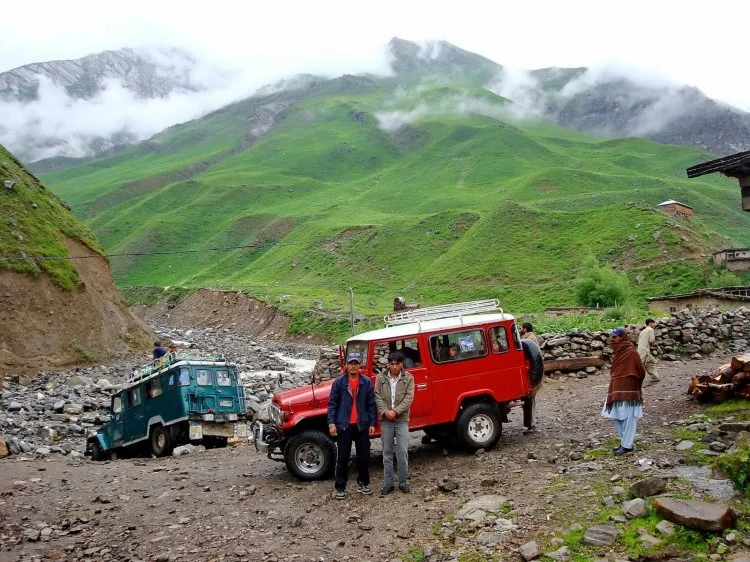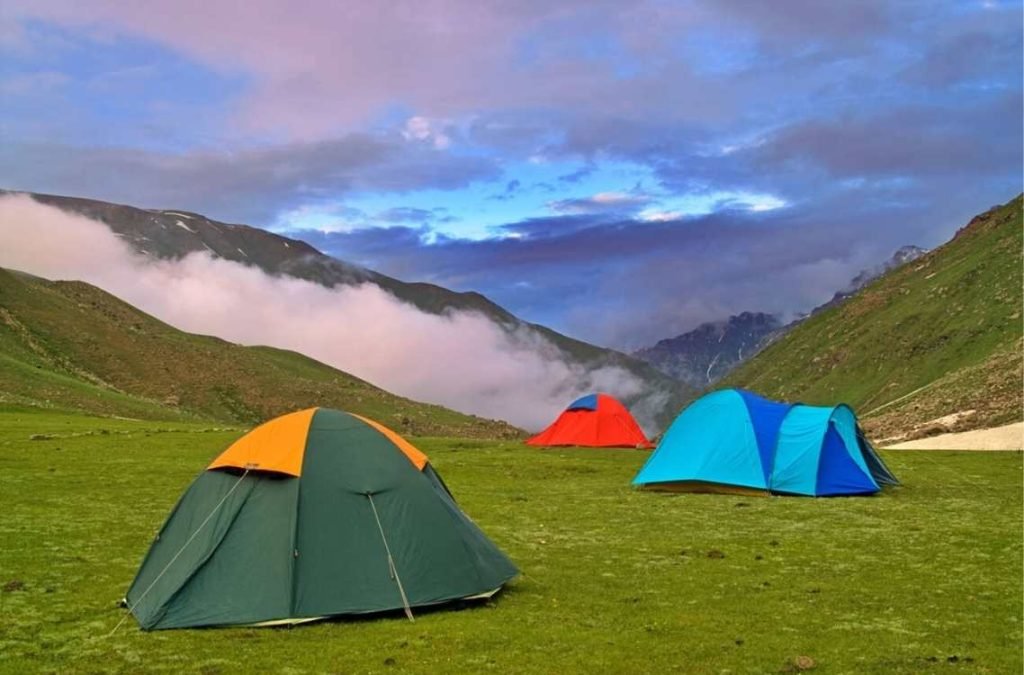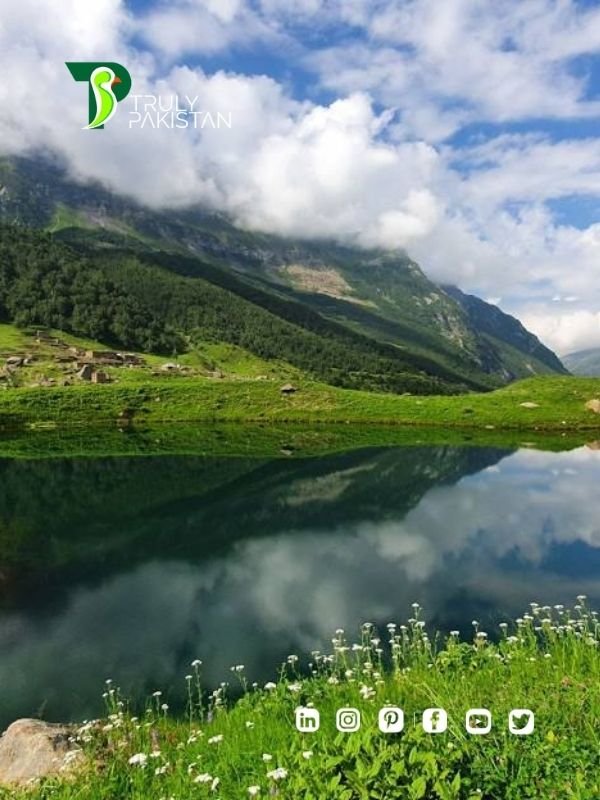Shounter Lake: A Complete Guide to Azad Kashmir’s Hidden Alpine Jewel


High in the Neelum Valley of Azad Kashmir lies one of Pakistan’s most breathtaking alpine destinations — Shounter Lake. Surrounded by snow-capped peaks and wild meadows, the lake sits quietly at an altitude of around 3,100 meters (10,200 feet), reflecting the untouched beauty of northern Pakistan. Fed by glacial streams and known for its deep turquoise hue, Shounter Lake is more than just a scenic spot — it’s a gateway to the Shounter Pass that connects Kashmir with Astore Valley in Gilgit-Baltistan.
Whether you’re a trekker planning a summer adventure or a traveler seeking calm in nature’s silence, this guide brings together everything you need to know — from access routes and trekking tips to camping safety and the best months to visit.
Table of Contents
Introduction to Shounter Lake
Shounter Lake is located in the upper region of Neelum Valley, near the village of Kel in Azad Jammu and Kashmir, Pakistan. It lies about 14 kilometers northeast of Kel and is accessible by a narrow jeep track during summer months. The lake’s clear, cold waters come from surrounding glaciers, creating a natural mirror framed by green slopes and snow-laced cliffs.
Its location makes it both secluded and rewarding — perfect for travelers who value peace and natural purity over crowded tourist spots.Elevation: 3,100 meters (10,200 feet) Coordinates: Approx. 34.79° N, 74.62° E Access Route: Kel → Shounter Valley (Jeep Track) → Shounter Lake Best Visiting Months: June to August Highlights: Glacial lake, alpine flora, camping, and Shounter Pass trekking route
Location, Geography, and Climate of Shounter Lake
Where is Shounter Lake Located?
Shounter Lake lies within the Neelum Valley region of Azad Kashmir, roughly 150 kilometers from Muzaffarabad. The lake sits at the base of the Shounter Pass, which leads over to Astore Valley in Gilgit-Baltistan. On clear days, visitors can see distant peaks such as Sarwali Peak — one of the highest in Azad Kashmir. The last accessible settlement before the lake is Kel, a small mountain town serving as the main hub for trekkers and tourists heading into the upper valley.
Shounter Valley itself is a long stretch of alpine terrain lined with small villages, wildflower fields, and streams fed by the melting snow of surrounding glaciers. Its narrow dirt roads are navigated by local jeeps that climb steep inclines and ford shallow rivers to reach the lake — a journey as thrilling as it is scenic.
Geological and Environmental Features
The lake was formed through glacial melting, and its water level changes seasonally based on snowmelt from the mountains above. The surrounding slopes are rich in alpine vegetation, including Iris hookeriana — a wildflower species native to Kashmir. During June and July, these purple irises bloom across the meadows, adding color to the otherwise stark mountain backdrop.
The environment is pristine yet fragile. Trekking and camping activities have grown in popularity, making responsible tourism essential. Carrying back waste, using reusable bottles, and avoiding campfires near the lake are small steps that help preserve its purity for future visitors.
Climate and Seasonal Conditions
Shounter Lake remains snowbound for most of the year, opening to visitors between late May and early September. Even in summer, temperatures can drop to near freezing at night. Days are usually mild (10–20°C), while nights demand proper layering and sleeping gear. Unexpected rain or snowfall can occur any time due to shifting weather systems around the Himalayas, so visitors should always check the latest forecasts and road updates before setting out.
How to Reach Shounter Lake
Route Overview and Access Points


The journey to Shounter Lake begins from Islamabad or Muzaffarabad and follows the main Neelum Valley Road. Travelers first reach Kel, about a 9–10 hour drive depending on road conditions. From Kel, a 14-kilometer jeep track winds through pine-covered hills and narrow passes toward Shounter Valley. The road is bumpy and steep in sections but offers panoramic views of glaciers and river crossings that make the effort worthwhile.
Because public transport does not operate beyond Kel, hiring a local jeep is the only way to reach the base of the lake. Drivers familiar with the terrain are easy to find in Kel Bazaar, and it’s recommended to negotiate both ways in advance.
Trekking the Shounter Pass
Understanding the Shounter Pass
The Shounter Pass serves as a natural gateway connecting Azad Kashmir’s Neelum Valley with Astore Valley in Gilgit-Baltistan. It is one of the few high-altitude passes that allow trekkers to experience both regions’ landscapes in a single expedition. From the top of the pass, panoramic views of snowbound ridges, glaciers, and distant peaks unfold in all directions — an unforgettable sight for mountain lovers.
Trek Difficulty and Preparation
While the initial hike to Shounter Lake is beginner-friendly, the Shounter Pass trek demands endurance and preparation. Trekkers must carry essentials like layered clothing, energy food, and trekking poles. Nights are cold and windy, so a reliable tent, sleeping bag, and insulation mat are must-haves.
The weather above 4,000 meters can shift rapidly — sunshine can turn into hail or snow within minutes. Always check weather reports from Pakistan Meteorological Department before departure. Avoid solo trekking and inform locals in Kel about your plan and return date.
Camping and Base Camps
The main base camp lies at the lower Shounter Valley near the jeep stop, surrounded by green meadows and small water streams. Many groups also set up an overnight camp closer to the lake for easier sunrise access. Basic facilities are minimal, so trekkers must bring their own tents, cooking equipment, and waste bags.
Porters from nearby villages can be hired to help carry gear, usually charging PKR 2,000–3,000 per day. Always agree on wages and return schedules beforehand. Camping here is peaceful — the only sounds are rushing water and distant mountain winds — but temperatures drop sharply after sunset, often below 5°C even in July.
Activities and Experiences at Shounter Lake
Camping and Stargazing


Camping beside Shounter Lake is a serene experience unlike any other. The silence of the valley, the reflection of the moon on the water, and a sky filled with countless stars make it one of Pakistan’s most peaceful natural escapes. Many travelers pitch their tents near the lake’s edge, though a safer distance of at least 30–40 meters from the shore is recommended due to fluctuating water levels.
For the best stargazing, visit during mid-July when the skies are clearest and the Milky Way is visible without light pollution. Carry warm layers, a sleeping mat, and headlamps. Avoid lighting bonfires near vegetation — use portable stoves to minimize environmental impact.
Photography and Nature Walks
Photography enthusiasts will find endless opportunities here. Early morning and late afternoon offer the best lighting for landscape shots — when the water mirrors the surrounding peaks. Drone photography is becoming popular, but always maintain safe altitude and distance from wildlife.
Several short nature trails branch off from the lake towards small glaciers and meadows filled with wildflowers. These walks are ideal for travelers who prefer easy hikes over full treks. You can check trail visuals on TravelPakistani’s visual blog for reference images and orientation.
Adventure and Meditation
While many visit Shounter Lake for adventure, others come seeking solitude and reflection. The crisp mountain air and quiet surroundings make it a natural retreat for meditation and mindfulness. Travelers often spend hours simply sitting by the lake’s edge, watching the clouds drift over the water. Some groups organize guided yoga or breathing sessions here during the summer — a refreshing combination of nature and self-awareness.
Best Time to Visit Shounter Lake
Seasonal Breakdown
The lake remains frozen for most of the year and only becomes accessible between late May and early September. The best months to visit are June, July, and August, when the road from Kel is open and the weather is relatively stable. Snow begins melting by late May, revealing lush meadows and clear trails.
In June, the water appears turquoise due to fresh glacial melt. By July, it turns deeper blue under warmer skies. August brings mild rainfall but offers the best greenery. Visiting outside this window isn’t advised — snow and landslides make access risky and often impossible.
Photography and Lighting Seasons
For photographers, timing is key. Early mornings provide mirror-like reflections of the peaks, while evenings create warm golden light ideal for wide shots. The lake’s clarity changes daily depending on meltwater inflow, so try capturing multiple angles throughout the day. Cloudy afternoons can produce dramatic shots when sunlight breaks through gaps in the mist.
Off-Season Travel
Between October and April, Shounter Valley receives heavy snowfall, blocking the jeep track completely. Some experienced trekkers attempt the area on foot during early winter, but only with local guides and proper gear. For most travelers, it’s safer to explore lower-altitude destinations like Neelum Valley during the off-season.
Travel Tips and Safety for Shounter Lake Visitors
Essential Travel Checklist
- Warm clothing (temperatures can drop below 5°C at night)
- Trekking shoes with firm grip
- Rainproof jacket and backpack cover
- Reusable water bottles and purification tablets
- Portable stove and dry food
- First-aid kit and altitude medication
- Power bank and extra flashlight batteries
Safety Precautions
Always check the weather forecast before leaving Kel, as conditions in the upper valley can change quickly. Inform a local guide or guesthouse owner about your trekking plan and expected return time. The area has limited mobile coverage, so physical maps and GPS devices are helpful. Avoid hiking alone and maintain a steady pace to prevent altitude sickness.
For emergencies, travelers can contact Rescue 1122 in Muzaffarabad or reach out to local tour operators stationed at Kel. Basic first-aid is available at Kel Bazaar, but serious medical help requires evacuation to Muzaffarabad.
Frequently Asked Questions (FAQ)
What is the best time to visit Shounter Lake?
The best time to visit Shounter Lake is between June and August, when the snow melts and the jeep track from Kel becomes accessible. During this period, weather remains mild, meadows are in bloom, and camping conditions are ideal.
How difficult is the trek to Shounter Lake?
The trek from the jeep stop to the lake is easy to moderate, taking about an hour. However, the extended trek across the Shounter Pass to Astore Valley is significantly more challenging and requires physical preparation and guidance.
Is Shounter Lake accessible by car or only by jeep?
Only 4×4 jeeps can reach Shounter Valley. The road from Kel is narrow and rocky, unsuitable for regular vehicles. Local jeeps can be hired from Kel Bazaar for a round trip to the lake.
Can beginners attempt the Shounter Pass trek?
Beginners can visit the lake but should avoid crossing the Shounter Pass without prior trekking experience. The pass reaches altitudes above 4,400 meters and requires acclimatization, camping gear, and navigation support from experienced guides.
Are there camping facilities near Shounter Lake?
There are no permanent camping facilities, but travelers can camp freely near the lake or the base camp in Shounter Valley. Visitors must bring their own tents, food, and equipment. Hiring local porters is highly recommended.
Conclusion: Plan Your Trip to Shounter Lake
Shounter Lake remains one of Azad Kashmir’s most awe-inspiring destinations — a place where nature’s calm and rugged beauty blend into an unforgettable journey. From the glacial reflections on its turquoise surface to the peaceful trails surrounding it, every moment spent here connects travelers with Pakistan’s alpine wilderness in its purest form.
Visiting Shounter Lake is not just a trip; it’s a test of patience, planning, and respect for nature. The bumpy jeep rides, steep climbs, and unpredictable weather make the reward even more special. Whether you come to camp under the stars, capture stunning mountain shots, or simply find peace in solitude — this lake offers an experience that stays long after you’ve left its shores.
Before planning your visit, ensure you’re well-prepared with the latest weather updates, travel gear, and guidance from local operators. Always travel responsibly and treat the environment as a guest — take nothing but photos and leave nothing but footprints.
Related Post: 15 Beautiful Sites of Kashmir to Visit in 2025


Author: ZunNurain Khalid — Travel & Tourism Specialist, Founder of ExploreX Pvt. Ltd., and advocate for sustainable tourism in Pakistan. With over a decade of experience in digital marketing and destination branding, ZunNurain has worked extensively on promoting Pakistan’s natural and cultural heritage.
References
- Wikipedia – Shounter Lake
- Pakistan Travel Guide – Trek to Shounter Lake
- TravelPakistani – Shounter Lake Travel Blog
- Hikers Junction – Shounter Pass Trek
- FlyPakistan – Shounter Lake Overview
- The Globe Vista – What to Know Before Visiting Shounter Lake
- Azad Jammu & Kashmir Tourism Department
- UNWTO – Sustainable Tourism Development
Note: Information provided above is based on current travel advisories and data verified from official tourism sources and adventure networks. Visitors are encouraged to check real-time updates before planning their trips.

